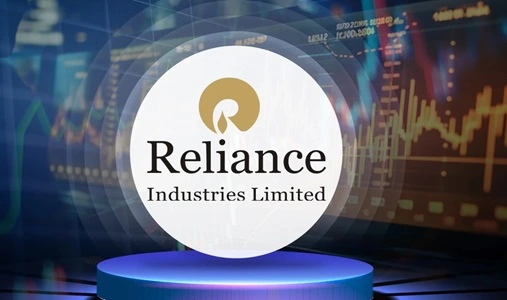Reliance Industries Limited (RIL) is one of India’s largest conglomerates, with a vast presence in sectors like petrochemicals, refining, oil and gas exploration, telecommunications, retail, and more. Founded by Dhirubhai Ambani in 1966, the company has grown to become a significant player not just in India but globally. As of 2024, Reliance Industries is at a pivotal point, navigating a complex landscape of opportunities and challenges. This SWOT analysis aims to provide a detailed examination of the company’s strengths, weaknesses, opportunities, and threats.

Current Overview of Reliance Industries
Reliance Industries continues to be a behemoth in various sectors, particularly in petrochemicals and telecommunications. The company’s telecom arm, Reliance Jio, has revolutionized India’s digital landscape, becoming a major force in the industry. Reliance Retail, another key division, has expanded its footprint across the country, offering everything from groceries to high-end fashion. The company’s strategic investments in clean energy and digital services have positioned it as a forward-thinking leader. However, the company also faces significant challenges, including high debt levels and growing scrutiny over environmental practices.
Strengths
1. Diversified Business Portfolio: Reliance Industries boasts a highly diversified business portfolio that spans across multiple sectors, including petrochemicals, refining, telecommunications, retail, and digital services. This diversification reduces the company’s reliance on any single industry, thereby mitigating risks associated with sector-specific downturns.
2. Strong Financial Performance: The company has consistently demonstrated strong financial performance, with robust profitability and a solid balance sheet. This financial strength allows RIL to invest in new ventures and sustain its competitive edge in various markets.
3. Market Leadership: Reliance holds a dominant position in several of its operating sectors. Reliance Jio is a market leader in the telecom sector, while Reliance Retail is the largest retailer in India. This market leadership provides the company with a competitive advantage, enabling it to set industry trends and standards.
4. Innovative and Strategic Investments: RIL’s strategic focus on future growth areas such as renewable energy, particularly in solar and hydrogen, positions the company to capitalize on the global shift towards sustainability. The company’s investments in digital services and technology also reflect its commitment to innovation and future-readiness.
Weaknesses
1. High Debt Levels: One of the most significant weaknesses of Reliance Industries is its high debt burden. The company has taken on substantial debt to fund its expansion and diversification efforts. While this has enabled growth, it also poses risks related to liquidity and financial stability.
2. Regulatory Challenges: Reliance Industries has faced various regulatory challenges, particularly in its oil and gas business. Disputes related to the Krishna-Godavari basin and environmental concerns have at times tarnished the company’s reputation and strained its operations.
3. Dependence on Oil and Gas: Despite its diversified portfolio, a significant portion of Reliance’s revenues still comes from its oil and gas operations. This dependence makes the company vulnerable to fluctuations in global oil prices and geopolitical tensions that could impact supply chains.
Opportunities
1. Expansion into International Markets: With its vast resources and expertise, Reliance Industries has the opportunity to expand further into international markets, particularly in sectors like petrochemicals, telecommunications, and retail. This expansion could open up new revenue streams and enhance the company’s global footprint.
2. Renewable Energy Transition: The global shift towards renewable energy presents a significant opportunity for Reliance. The company’s investments in solar power and green hydrogen align with global sustainability goals, potentially positioning it as a leader in the clean energy sector.
3. Digital Transformation: The ongoing digital transformation across industries offers Reliance the chance to expand its digital services. By leveraging technology and data analytics, the company can enhance its existing offerings in telecommunications, retail, and digital services, providing more personalized and efficient solutions to its customers.
Threats
1. Intense Competition: Reliance Industries faces intense competition across all its business sectors. In telecommunications, rivals like Bharti Airtel and Vodafone-Idea are constantly innovating to capture market share. In retail, the entry of global giants like Amazon and Walmart poses significant competitive threats.
2. Environmental and Legal Scrutiny: As a large conglomerate with operations in environmentally sensitive sectors, Reliance Industries is under constant scrutiny from regulatory bodies and environmental NGOs. Any misstep could lead to legal challenges, fines, or damage to the company’s reputation.
3. Economic Instability: Global economic instability, including fluctuations in currency exchange rates and commodity prices, could negatively impact Reliance’s operations, particularly in its oil and gas and petrochemicals businesses. Additionally, rising inflation and interest rates could increase operational costs and squeeze profit margins.
Conclusion
Reliance Industries stands at a crossroads in 2024, with significant strengths that have driven its growth over the decades. However, the company must navigate various challenges, including high debt levels, regulatory pressures, and intense competition. By capitalizing on opportunities in renewable energy and digital transformation, Reliance can continue to strengthen its market position and drive future growth. The company’s ability to address its weaknesses and mitigate external threats will be crucial in determining its long-term success and sustainability in an increasingly complex global environment.